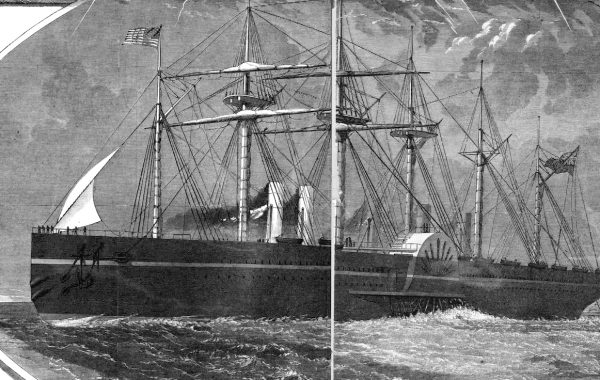I wanted to call this post “The Shock of the New” but apparently I’ve been beaten to that phrase.
I was talking briefly yesterday about how new technologies are absorbed into existing cities, with any given tech being adopted at different speeds in different places and the various technologies being adopted at different speeds in a single city. This kind of discussion always seems to center on whatever the newest widespread technology of today is: a few years ago it was the internet and big data, now it’s biometrics and personalized data. I’m far more interested in past occurrences, which are hard for us to even see because we’re so immersed in them.
The picture above is from 1904 and shows an almost complete tunnel of the brand-new IRT subway. We’re on the second track from the right of four parallel tracks, with the tracks to the left and right clearly visible and the far left track just barely visible. The roof consists of concrete segmental vaults supported on steel beams; each beam is supported by built-up steel columns. The visual power of the photo lies in the repetition of the vault/beam/column frames on a five-foot spacing.
There’s no specific age for when a technology stops being “new.” The oldest electric trains in the U.S. were about 25 years old when this picture was built, and the all-electric services into Grand Central and Penn Station were under construction. So the use of electric trains (pretty much necessary for a true subway system) was newish, if not new. Here are a few other new technologies in that photo:
- The tunnel was built cut-and-cover rather than bored. The entire street was excavated, the steel frames and concrete vaults put in place, and then fill put back over the concrete to get the street back up to grade. This system only really makes sense if you gave an easy way to build the tunnel roof and so was enabled by the steel.
- All-steel structures were less than thirty years old at the time and only became common about twenty years earlier.
- The use of structural concrete in a form recognizably similar to modern concrete was less than twenty years old.
- Practical electric lighting was about 25 years old.
That subway was not just an innovation in transportation for New York, it was made possible through the use of new technologies. Plans for subways had been batted around in the press for forty years or more by the time the IRT opened, but most of the ideas would have been qualitatively worse because they were too early to take advantage of the new tech. That tunnel still exists and is still in use. The signals have been modified, the type of rail has been changed, and a similar picture today would show 114 years of grime on every surface. All that makes it hard to see now how new it all was then.




You must be logged in to post a comment.